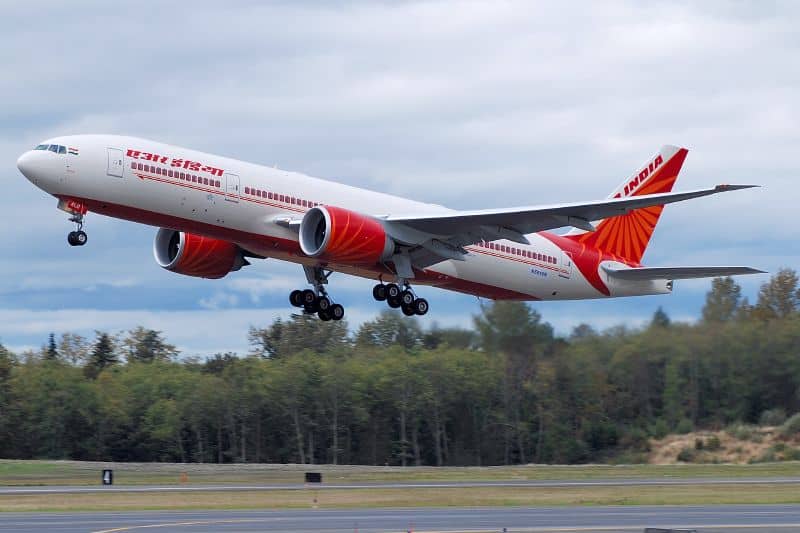Airlines
Air India and Willis Lease Ink Historic agreement Constant Thrust® Engine Sale & Leaseback
which will provide Air India with significantly greater reliability and cost savings than a conventional MRO shop visit program.

A firm sale and leaseback contract for 34 CFM56-5B engines installed on its Airbus A320 family aircraft has been signed by Air India with Willis Lease Finance Corporation.
The engines will be covered by the ConstantThrust® program from Willis Lease, which will provide significantly greater reliability and cost savings than a conventional MRO shop visit program. This is the first ConstantThrust® sale and leaseback deal by an Indian carrier for aircraft engines.
Willis Lease will buy 34 engines from Air India as part of the sale portion of the deal, and these engines will power 13 Airbus A321 and 4 Airbus A320 aircraft. Willis Lease will offer replacement and backup spare engines through ConstantThrust®, saving Air India from potentially expensive and unpredicted shop visits on the engines supplying a fleet of transitioning aircraft.
Willis Lease is a top global aviation finance firm with its headquarters in Florida, USA. It specializes in leasing, financing, and managing aircraft, spare commercial aircraft engines, and auxiliary power units. In order to provide programmatic assistance to airlines and lessors globally, ConstantThrust® makes use of these capabilities as well as Willis Lease’s spare parts, engine, and aircraft technical management services as well as its aviation engine maintenance, repair, and overhaul (MRO) services.
Brian R. Hole, President of Willis Lease, stated that “Air India ran a rigorous process to evaluate all options for managing the significant maintenance, operational risk, and logistical burden these engines would have created. We are proud that all the benefits of ConstantThrust® rose to the top in the end.”

Airlines
Air India Rolls Out A350s for Delhi-New York JFK and Newark Routes

In a major development for North American travelers, Air India has announced the deployment of its state-of-the-art Airbus A350-900 aircraft on two key routes: Delhi to New York and Delhi to Newark.
The service on the Delhi-New York route will commence on November 1, 2024, while the Delhi-Newark route will see its inaugural flight on January 2, 2025.
The introduction of the air india a350 will bring significant enhancements to Air India’s offerings, particularly with the launch of its Premium Economy class. air india retrofit This new class will feature 24 wide seats arranged in a 2-4-2 configuration, providing passengers with extra legroom and a more comfortable flying experience.
Soon, Air India aircraft will feature onboard WiFi & all-new cabins: Click here
“We are encouraged by the positive guest feedback we have received from the domestic deployment of our air india a350 interior to offer our hero product on the Delhi-New York JFK and Delhi-Newark routes. This is a significant leap forward for our U.S. operations that also underscores our commitment to continuous improvement,” said Campbell Wilson, Chief Executive Officer & Managing Director of Air India.
The A350’s Business class will set new standards with 28 private suites, each equipped with full-flat beds, direct aisle access, and personal wardrobes. Economy class will be configured to accommodate 264 passengers in a 3-4-3 layout. Across all cabins, passengers will enjoy the latest Panasonic eX3 in-flight entertainment system, offering over 2,200 hours of content.
Air India’s First A350-900: Interior, Routes, &Inflight Features: Click here
This strategic deployment marks a notable enhancement in Air India’s U.S. operations, with 60% of its flights to the U.S. now featuring new or upgraded cabin interiors. The air india new international routes currently operates 51 weekly flights to five U.S. destinations: New York JFK, Newark, Washington DC, Chicago, and San Francisco.
The revamped cabins, advanced in-flight entertainment systems, and improved service standards represent air india wifi commitment to providing a superior travel experience. “We believe this enhanced offering will solidify Air India’s position as a leading carrier and attract travellers seeking a world-class flying experience between India and the United States,” the airline stated.
Seats on these flights are now available for booking on Air India’s website, mobile app, and through travel agents, ensuring that passengers can easily plan their journeys on these newly upgraded routes.
Air India Economy vs Qatar airways economy: which is best?:Click here
-

 Travel1 week ago
Travel1 week agoAir India to Expand US Operations with Three New Routes After a Decade
-

 Travel2 weeks ago
Travel2 weeks agoWhy We Should Avoid These Stamps in a Passport
-

 Airlines1 month ago
Airlines1 month agoInvestigations Reveal Fake Chinese Titanium in Boeing and Airbus Jets
-

 Tech4 weeks ago
Tech4 weeks agoChina’s CATL Plans 1,800-Mile Electric Plane Launch by 2027
-

 Airport3 days ago
Airport3 days agoTop 10 Largest Airports in the World by Size
-

 Aerospace4 weeks ago
Aerospace4 weeks agoChina’s Fighter Jets Turn Wings into Autonomous Drones
-

 Airlines4 days ago
Airlines4 days agoAir India Rolls Out A350s for Delhi-New York JFK and Newark Routes
-

 Defence3 weeks ago
Defence3 weeks agoBoeing Enhances Chinook with New Engines and Block II Upgrades at $96 Million







